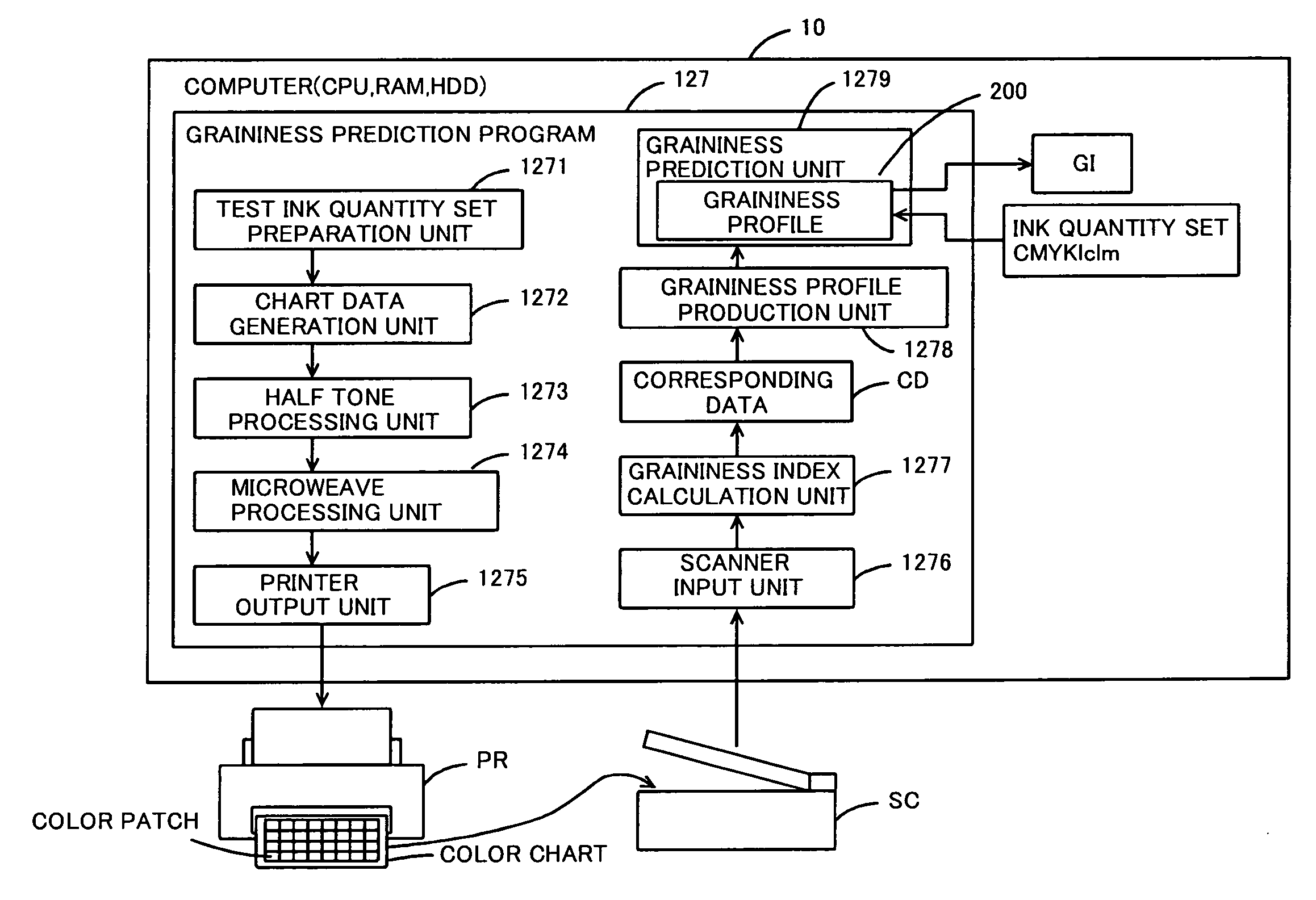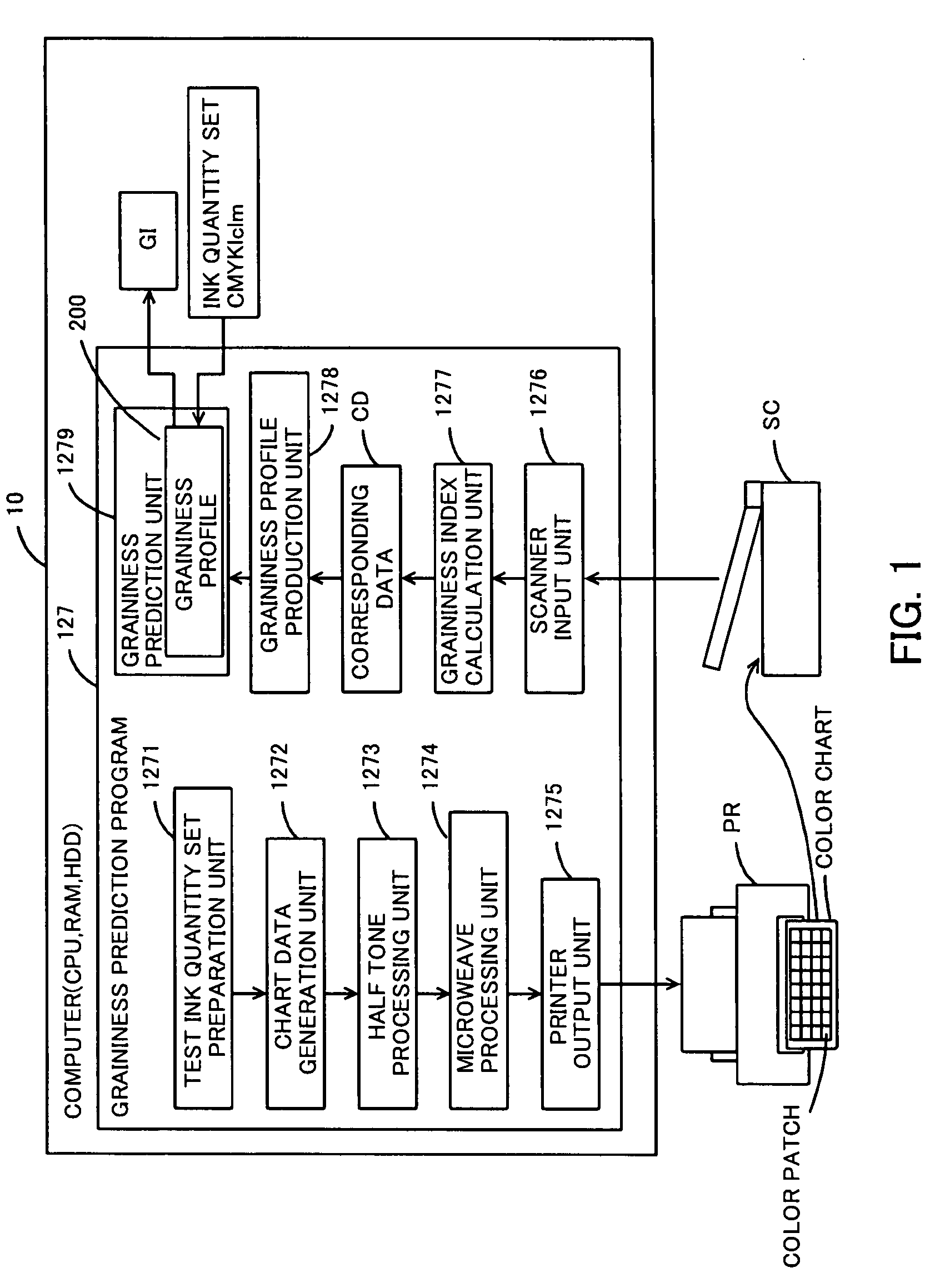Prediction of graininess and production of profile
a production technology and graininess prediction technology, applied in the field of graininess prediction technology and profile production technology for printers, can solve the problems of large large error characteristic of printers, and difficulty in performing simulation and form/evaluate color patches, etc., to reduce the number of ink quantity sets, inhibit such fluctuations, and reduce the difference with graininess index
- Summary
- Abstract
- Description
- Claims
- Application Information
AI Technical Summary
Benefits of technology
Problems solved by technology
Method used
Image
Examples
first embodiment
A. First Embodiment
[0036]FIG. 1 illustrates the configuration of a graininess prediction apparatus of the first embodiment of the present invention. In the figure, the graininess prediction apparatus is realized by means of a computer 10, and the computer 10 predicts a graininess by executing a graininess prediction program 127. The computer 10 executes the graininess prediction program 127, while using a RAM in a CPU (not shown in the figure) as a work area, and stores the data necessary for each processing in a storage device such as a HDD (not shown in the figure).
[0037]The graininess prediction program 127 comprises a test ink quantity set preparation unit 1271, a chart data generation unit 1272, a half tone processing unit 1273, a microweave processing unit 1274, a printer output unit 1275, a scanner input unit 1276, a graininess index calculation unit 1277, a graininess profile production unit 1278, and a graininess prediction unit 1279. The printer output unit 1275 can output...
modification example
D. Modification Example
[0125]In the above-described example, the graininess index GINN relating to an arbitrary ink quantity set was calculated based on the NN learned with the graininess indexes GI of color patches relating to a plurality of test ink quantity sets, but the graininess index GI relating to an arbitrary ink quantity set may be also calculated based on other methods. For example, the graininess profile 200 may be produced with another formats. In the above-described embodiment, NN was produced as the graininess profile 200 in step S285 based on the corresponding data CD that were stored in step S280 illustrated by FIG. 2, but the graininess profile 200 of another format may be produced on the corresponding data CD.
[0126]FIG. 16 shows schematically a lookup table (LUT) that serves as a graininess profile 200 of a modification example. In the LUT shown in the figure, the graininess index GI corresponding to the ink quantity set on the grid points with a constant spacing ...
PUM
 Login to View More
Login to View More Abstract
Description
Claims
Application Information
 Login to View More
Login to View More - R&D
- Intellectual Property
- Life Sciences
- Materials
- Tech Scout
- Unparalleled Data Quality
- Higher Quality Content
- 60% Fewer Hallucinations
Browse by: Latest US Patents, China's latest patents, Technical Efficacy Thesaurus, Application Domain, Technology Topic, Popular Technical Reports.
© 2025 PatSnap. All rights reserved.Legal|Privacy policy|Modern Slavery Act Transparency Statement|Sitemap|About US| Contact US: help@patsnap.com



